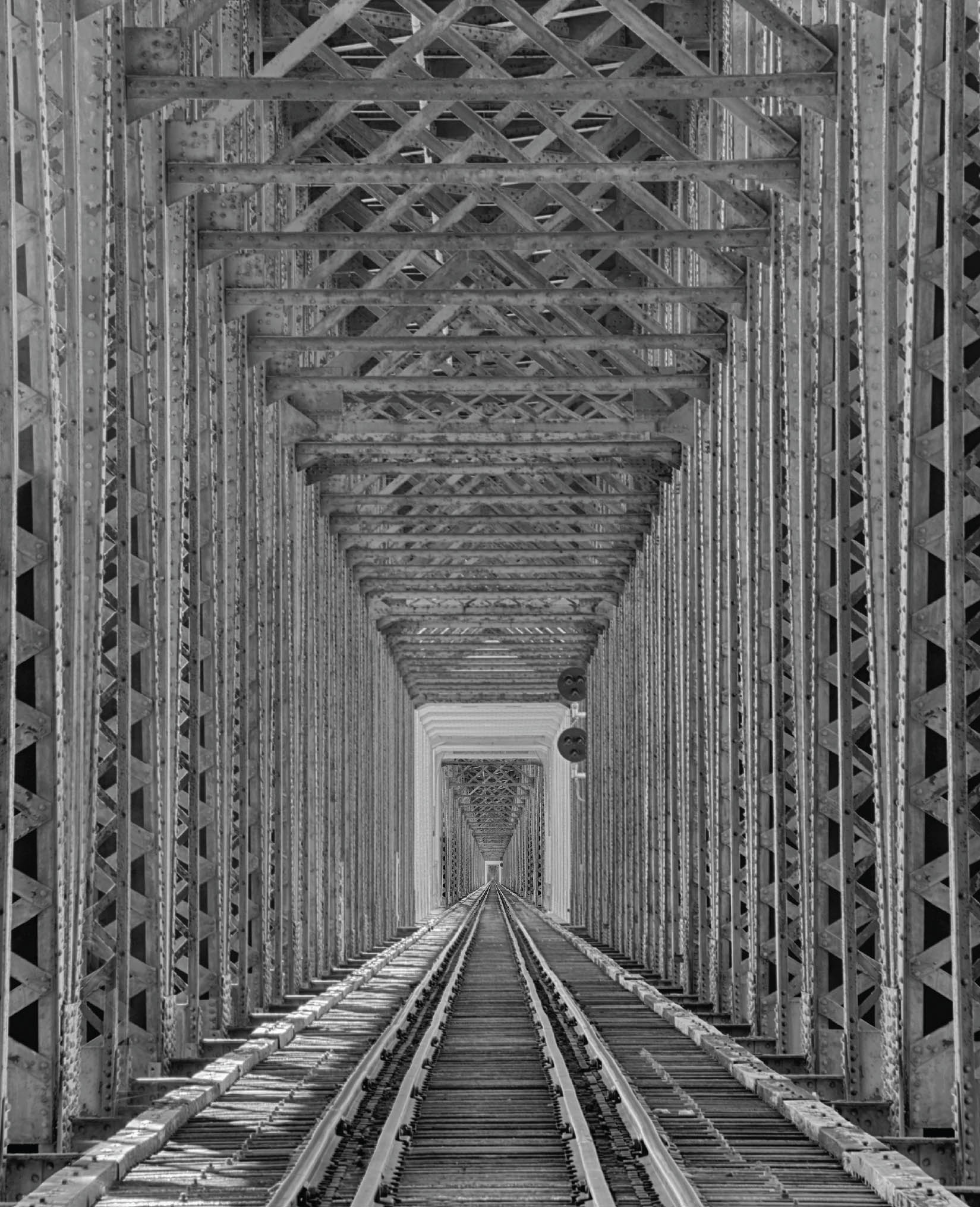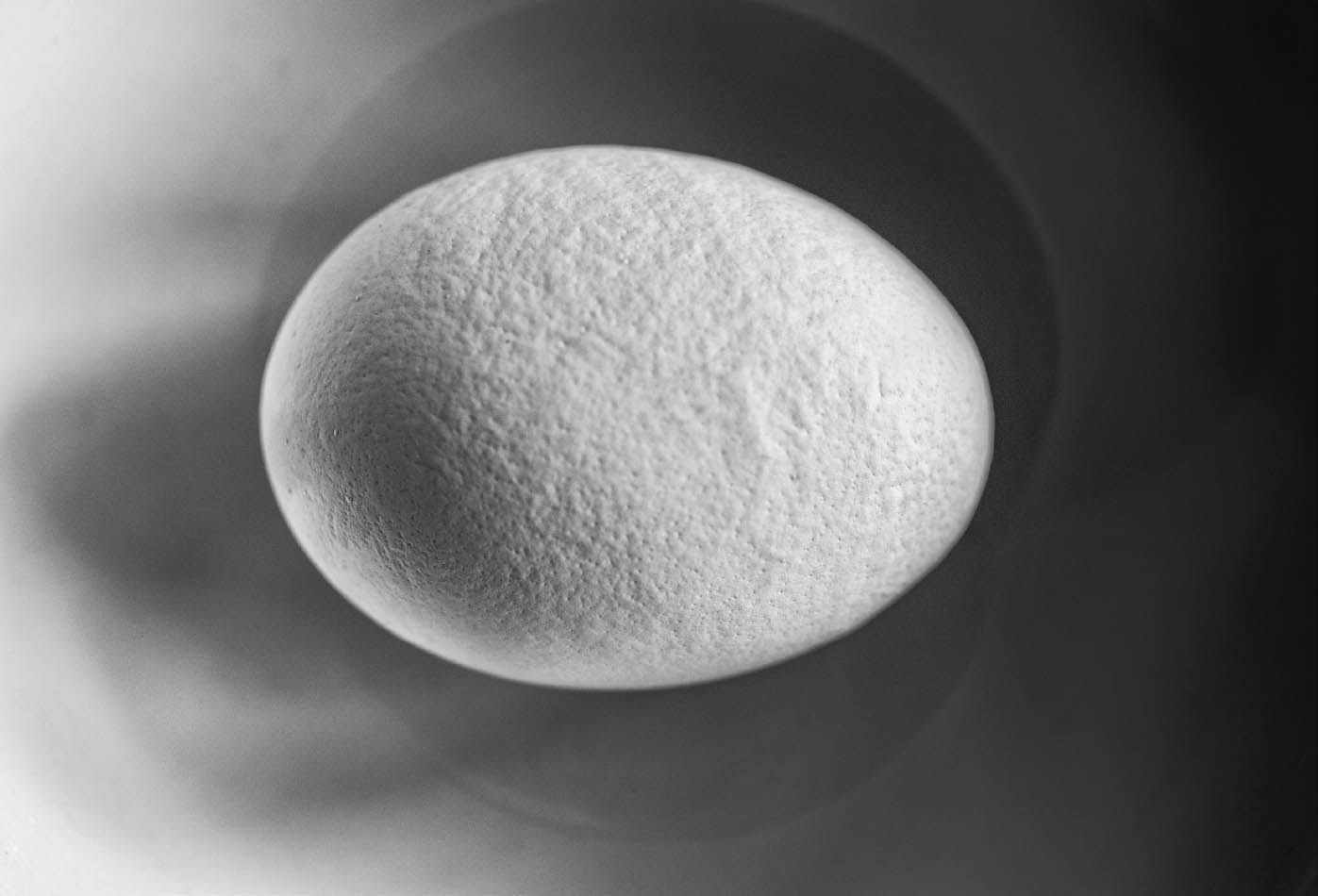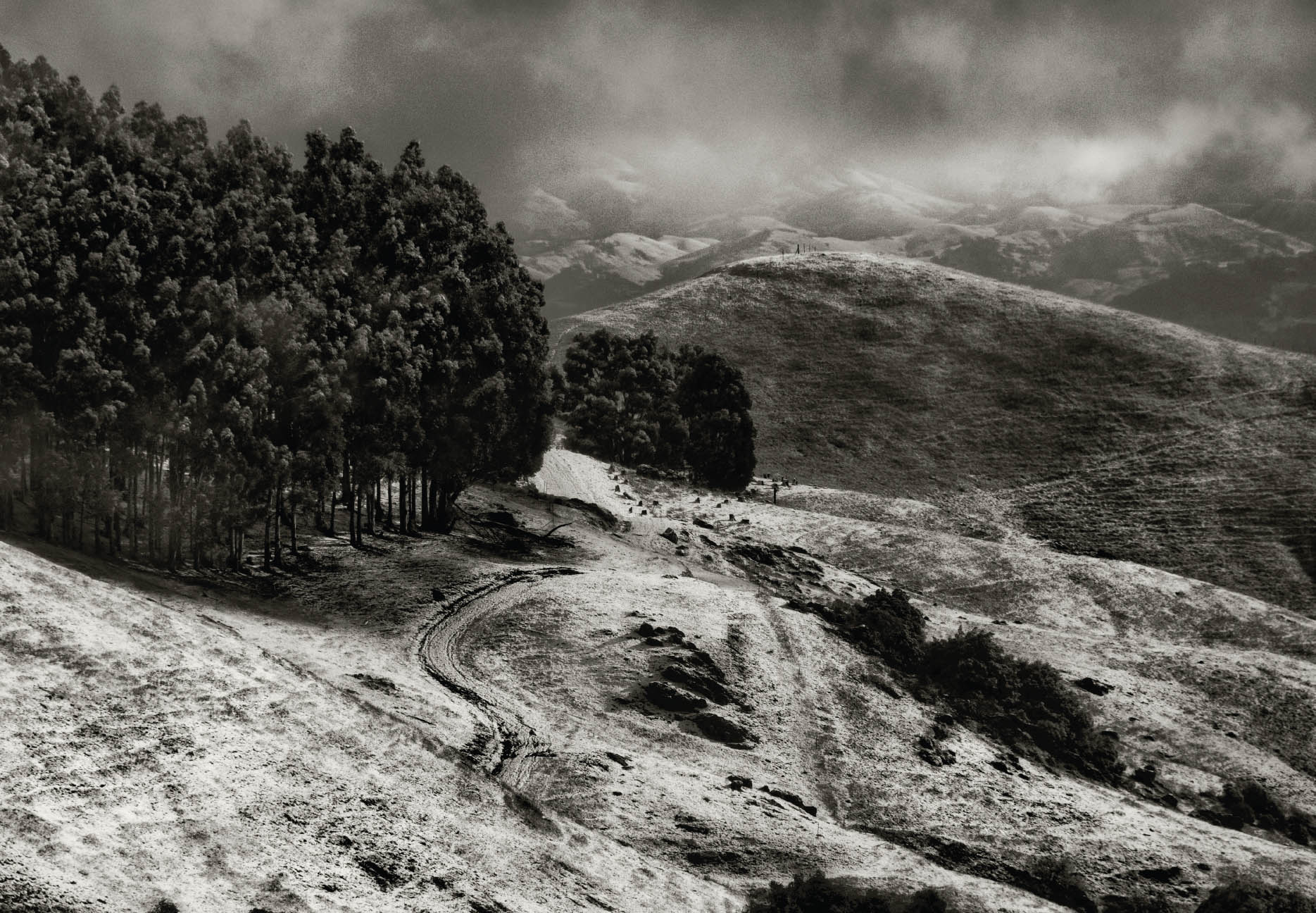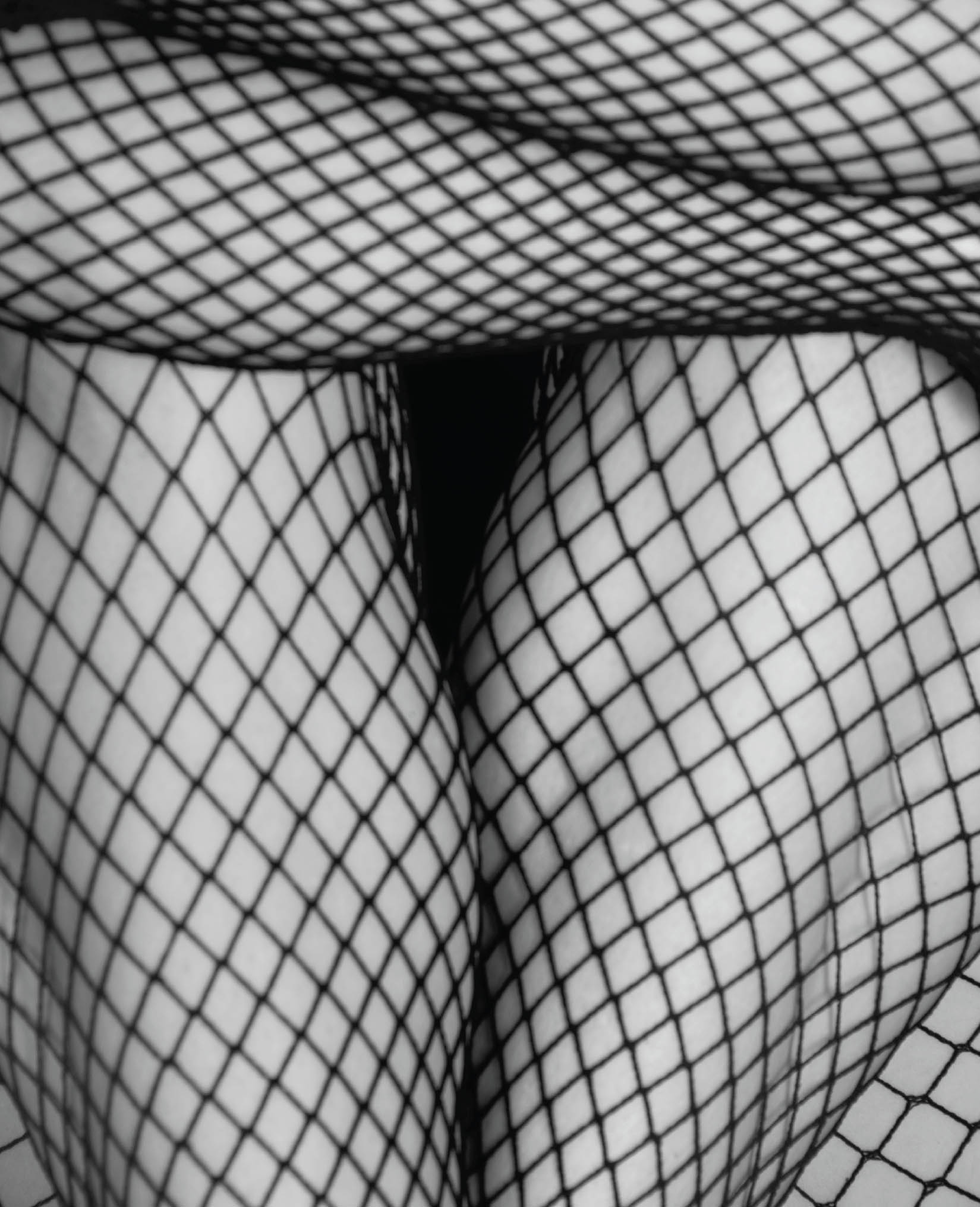Thinking in Black and White
The absence of color does not mean the obliteration of color. Black and white is a choice—and surprisingly, this choice can call attention to implied color in the image even more than if the image were actually presented in color.
If you want to think in black and white you must learn to view the world as seen through your camera in terms of implied color, and through gradations of gray.
A black and white image potentially shows a range from pure white to absolute black (leaving aside issues of tinting and toning, explained on pages 198–201).
These extremes are not often seen to any great extent in a color photo because pure white represents highlight blowout, and absolute black is approximated in impenetrable shadow. Except in unusual circumstances, color photos don’t usually feature as wide a range of grayscale tonal values as monochromatic imagery.
Contrast
Thinking in black and white means thinking in contrasts. The building blocks of composition are shape, design, and form. In the case of black and white, this formalism is consistent, and unleavened or softened by color. As I’ve noted, taking this to its limits, the contrast is between white and black.
Black and white photographers know that one of the primary tools of their compositional trade is the edge—the line between white and black. A hard edge between light and dark becomes a black shape on a white background—or a white shape on a black background.
In either case, the interrelationship between black and white allows for complexity in the handling of positive and negative spaces in the composition. Experienced black and white photographers know that creating, or emphasizing, the edge adds an element to a photo that is often not present in a color image.
Life doesn’t usually present us with obvious hard edges between black and white to photograph. Finding these edges requires developing a special kind of vision. Look for:
- Strong, interesting shadows: the shadows themselves may create a hard line between darkness and light.
Train Bridge, Maine—The old ship-building town of Bath, Maine, sits astride the Kennebec River. I was surprised to learn that one of the extravagant structures crossing the river was an essentially unused train bridge. I made my way onto the train bridge, hoping that no train would come along to interrupt my exposure. I positioned my tripod in the center of the tracks and used a long lens to better capture the alternating light and dark pattern of the steel structure.
Nikon D810, 250mm, eight exposures at f/22 and ISO 64, shutter speeds ranging from 1 second to 1/250 of a second, tripod mounted; converted to monochrome using Photoshop Adjustment layers and Nik Silver Efex Pro.
Egg—It’s a truism of photography that you cannot capture an object itself. All you can capture is the light reflected or emitted by an object. Looking at a homely subject, such as this egg on a white plate, it became very apparent to me that as I photographed it, that what I wanted to render was a study in whites and grays. After all, no other colors were present in the composition. So it was immediately apparent to me that this was a black and white image.
I used the simplest of setups to make my image: a single, hand held camera with a prime macro lens, pretty much wide open to the natural daylight of my kitchen, with no tricks, games, or gimmicks other than the idea of rendering the sublime white oval of a hard-boiled egg.
Nikon D850, 50mm macro, 1/60 of a second at f/5.6 and ISO 500, hand held; converted to black and white using Nik Silver Efex Pro.
- Compositions that are monotonic: if color is already mostly absent, then it is likely you can add light, expose, or add post-processing effects to create high contrast imagery.
- Extremes between areas of brightness and shadow in a subject: if there are extremes between light and dark, then a composition may lend itself to a high contrast black and white treatment.
Even when you recognize a high-contrast photographic subject, there may be additional work to do. You’ll want to consider:
- Positioning the camera to emphasize the edge, or the delineation between dark and white areas.
- Use lighting to maximize the contrast.
- Underexpose dark areas to make them blacker in the final image, or overexpose bright areas to make them whiter in the image. To compensate, you’ll need to adjust processing in areas that you don’t want to go fully black (or white).
- Consider various post-processing effects to increase tonal range, or to emphasize light or dark areas important to the composition.
Color Implied
Our expectation is that scenes and objects in our world are colored. For example, lettuce is green, a tomato is red, and an orange is, well, orange.
When one is viewing an object in black and white, it doesn’t negate the fact that we know the object has color. We tend to visually impute color to the subjects of photos unless these subjects seem so ancient or far away as to be beyond the reach of realism.
The imputation of color means that a photographer who is presenting work in black and white can assume that the subject will be seen as colored, at least to some degree.
Therefore, the photographer can take advantage of what monochrome does best, namely present the underlying forms and contrasts. In the universe of black and white, color can take care of itself, but it doesn’t mean it isn’t present. Color is the elephant in the room—not talked about but with a vast presence.
Black and white photographers who want to take advantage of the imputation of color should:
- Look for subjects whose color is readily known (think apples, oranges, and lettuce).
- Consider photographs where the natural colors don’t work well for some reason, but where imputed colors would be an improvement.
- Try to create a composition where formal aspects of design outweigh the allocation of color to the objects within the photo.
The Tonal Landscape
From the earliest origins of photography, black and white has been specially associated with landscape photography. The best landscape photographs have a purity of expression that meshes well with the sparseness of black and white. In addition, the simplicity and tonal range of black and white allows details to be brought out that would otherwise be camouflaged by the complexities of color.
To create interesting black and white landscape compositions, you should:
- Look for landscapes with varied textures and forms in the earth and sky.
- Avoid landscapes where the interest is primarily in saturated colors.
- Try to create compositions that take advantage of the bold shapes possible in black and white.
- Seek drama in the interplay between light and dark areas in your photo.
Costal Range Snow—Unusual snowfall in the coastal range mountains of California made this scene dramatic. However, overcast skies kept compelling colors out of the landscape. I realized that to make an interesting landscape image, I would need to process the image file to bring out the extensive contrast and color range that I saw in the scene in front of me.
Processing the snowy field in the foreground differently from the mountains in the background allowed me to turn a potentially muddy image into an attractive landscape composition.
Nikon D300, 200mm, 1/620 of a second at f/13 and ISO 200, hand held; converted to monochrome using Photoshop Adjustment layers and toning.
Fishnet—My idea in creating this fairly abstract composition of a model in fishnet stockings was to take a subject that could be considered risqué and transform it into an image that is fundamentally about the pattern rather than the subject. In fact, you have to look fairly hard at this composition to understand that you are seeing legs and arms.
The composition works in monochrome because of the contrast between the fishnet grid and the pale flesh. Once it is visually understood what one is looking at, then the implication is more suggestive than the initial visual take on the subject. So this is an image where a little study or a second look yields a very different impression than a first look. Model: Gwen Nymph.
Nikon D810, 250mm macro, 1/160 of a second at f/8 and ISO 250, lit with studio strobes, hand held; processed to black and white using ACR and Photoshop Adjustment layers.
Visual Implication
A black and white photograph shows the full-spectrum world of color monotonically. By stripping the color from a scene, the photograph adds mystery. When black and white is done correctly, we don’t always know what we are looking at. There’s a sense of ambiguity and—hopefully—profound mystery.
Ambiguity causes a double-take, engages the viewer, and makes the viewer spend time with the image. This is a good initial goal for any work of art because when time is spent deciphering the image, the viewer may progress to a deeper relationship with the work.
When the image is studied carefully and pursued to its logical extreme, certain visual implications can be drawn.
Ideally, visual ambiguity should be set up so that looking at the photo long enough does make the real subject matter—as opposed to the superficial first apparent subject—apparent.
Black and white photography that uses visual implication works on a kind of pun. The viewer gets a frisson of delight and a sense of collaboration with the photographer when the real subject is uncovered.
To create images that take advantage of ambiguity and visual implication, you should:
- Look for subject matter that can be interpreted visually in more than one way.
- Use positioning, framing, focus, and exposure to exploit the visual ambiguity by highlighting secondary visual meanings.
- Be aware that camera angle and choice of lens can be particularly important in creating visually ambiguous imagery.
- Post-process images to keep the sense of mystery alive.
- Work to create photos whose visual meaning can only be decoded a bit at a time.




